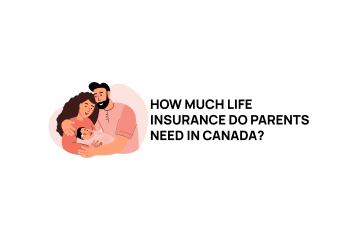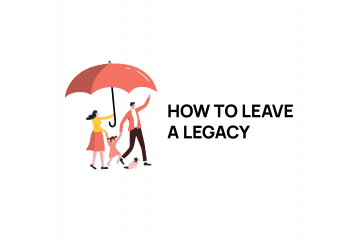In This Article
- Understanding Life Insurance Death Benefit
- Examples of a Death Benefit
- What Can The Death Benefit Be Used For?
- What is a Beneficiary?
- Is a Death Benefit Taxable?
- Summary
Understanding Life Insurance Death Benefit
Life insurance is designed to provide your loved ones with a lump sum payment, tax free in the event of your death. This financially protects your family because life insurance can be used to replace your income if you pass away. The life insurance company steps in at the time of death and provides a lump sum payment, tax free to the beneficiaries listed on your life insurance policy. This payment is called the death benefit and is an amount in Canadian dollars. Death benefits are not subject to income tax and the beneficiary typically receives the payment as a lump sum. Some life insurance companies allow for the payment to be structured to be paid out in instalments over time instead of as a lump sum.
When you break down the nuts and bolts of your life insurance policy, it really is the death benefit which matters the most and the main reason you are paying for the life insurance policy. The beneficiary of the policy must provide proof of death (e.g. a death certificate) to receive the money from the life insurance company.
Examples of a Death Benefit
If you purchase a life insurance policy with coverage of $500,000, the life insurance company is charging you a premium (the cost for the policy) to provide you with the peace of mind that your beneficiary will receive the amount of $500,000 if the insured person passes away. The amount of the death benefit is one of the major factors when determining the cost of your life insurance premiums.
What Can The Death Benefit Be Used For?
As previously mentioned, if the insured person passes away, the death benefit of the life insurance policy is paid out to the beneficiary listed on the life insurance policy. There are no limitations on what the beneficiary can spend the money on. Once the money is received, the policy is no longer in force and the beneficiary is able to spend the money however they please.
Typically, the proceeds are used to pay down debt (e.g. mortgage, line of credit or other loan), provide income to support a surviving spouse and/or children, pay for funeral costs and other unexpected bills that arise.
When Do You Receive The Death Benefit?
Assuming there are no complications when the beneficiary submits a claim to receive the money from the insurance company, the death benefit is received within 3-10 days from the time the claim has been processed. Every insurance company has claim forms that need to be completed which must be accompanied by a copy of a death certificate of the deceased person.
What is a Beneficiary?
A beneficiary is an individual or business listed on a life insurance policy who is designated to receive the proceeds when the insured person passes away. There are different types of beneficiaries, primary and contingent.
A primary beneficiary receives the coverage amount when the insured passes away. It is wise to make sure that you also a contingent beneficiary listed on the policy. A contingent beneficiary is also called a secondary beneficiary.
What happens if the insured person and the primary beneficiary both pass away at the same time? Maybe they are a married couple and are involved in a car accident… Who receives the death benefit? If you have a contingent (or secondary) beneficiary listed on the policy, it would go directly to the contingent beneficiary without any headaches. If there is no contingent beneficiary listed and both the insured and primary beneficiary pass away at the same time, the proceeds are paid out to the estate of the insured person. This will cause additional costs and delays compared to if there was a contingent beneficiary listed on the policy.
Since the proceeds would then be paid out to his/her estate rather than a beneficiary of their choice, it means that the Government will end up getting their hands on a piece. Always make sure that your beneficiary designations on your life insurance policy are correct and up to date.
Is a Death Benefit Taxable?
The death benefit is not taxable and is received tax free by the beneficiary.
Summary
A death benefit is the money that is paid out to the designated beneficiary of a life insurance policy when the life insured dies. There must be proof of death submitted to the life insurance company along with a claim form to be able to collect the proceeds of the death benefit. The money paid out from the life insurance policy by the life insurance company is tax free. There is no income tax charged by the CRA.
Always remember to ensure that your beneficiaries are up to date as you don’t want to leave your surviving loved ones in a tough position to collect the proceeds of your life insurance policy.
Please contact us if you have any additional questions or request a quote.




